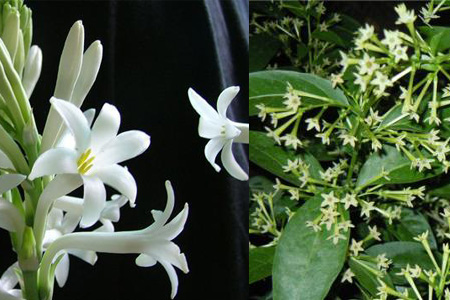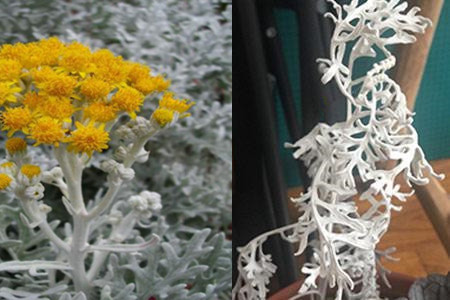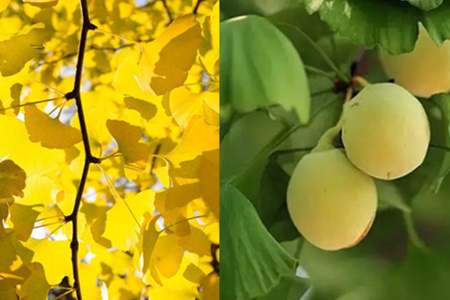Can nocturnal incense be pruned and planted? learn to use this trick for a lifetime.

Each kind of plant has its own characteristics, if it can be planted properly, it can also add some vitality to the environment, which is conducive to the purification of the environment. Therefore, many people will choose to plant some plants at home, on the one hand, they can nourish the interest, on the other hand, they can effectively decorate the space, which is the best of both worlds.
Well, when planting plants, we can better cultivate plants by keeping the planting methods of some plants in mind. Nocturnal incense, as a more common and well-scented flower, is in full bloom at night and can send out bursts of fragrance, which is deeply loved by people.
If you want to plant some nocturnal incense, can you choose to plant it by pruning? In fact, yes, just like most plants, they can be bred by pruning. Here are some practical tips that can help you grow good night incense smoothly.
Although many people know how to breed nocturnal incense, most friends don't know much about breeding nocturnal incense. Now let the friends who have been raising night incense for many years to share the skills of cutting propagation, so that flower friends can learn more knowledge.
1, select branches
When selecting branches, choose some sturdy ones with some buds, and do not choose branches with buds or longer overgrown branches, which will make the branches of cuttings lack nutrients and are not easy to survive.
2, pruning
That is, before the formal cutting, cut the branches shorter, about ten centimeters, and it is better to spread the roots on each short, which will help to take root, and then subtract the leaves as much as possible. just keep the top two leaves, and then you can put them in the soil.
3, heat preservation
After planting, you need to wrap the top of the branch in a plastic bag or the whole planting area, which helps to keep the temperature and help the branch survive.
Learn these four tricks and easily raise indoor potted plants!
Because of the changes in people's living environment, many people have opened the era of pot planting in the nursery. There are two or three pots of plants at home, green leaves, bright flowers can not only purify the air, decorate the home environment, cuttings, leaf watering room can also edify sentiment. So how can indoor potted plants be raised well? I'll let the editor tell you.
First, the choice of soil:
It is said that the foundation determines the superstructure, and the most basic way to raise a good potted plant is to choose the lower soil. According to its acidity and alkalinity, soil can be divided into acidic, alkaline and neutral soils. The most suitable soil is neutral soil, most plants can grow in neutral soil, but a small number of plants like acidic soil, such as rhododendron, jasmine, gardenia and so on. The most unsuitable for plant growth is alkaline soil, and almost no plant can survive in alkaline soil. If you can't tell the nature of the soil from cultivating it yourself, you can go directly to the florist to buy ready-made nutritious soil for planting.
The second point, the choice of flowerpot material:
The drainage performance of different plants is also different, some are resistant to drought and some are afraid of waterlogging, so it is necessary to buy flowerpots of different materials for breeding according to the requirements of different drainage of plants, and more drought-tolerant plants can choose plastic and ceramic pots with better sealing. If it is a plant that is particularly afraid of waterlogging, you must choose containers such as tile pots and pottery pots with good water permeability. It is important to pay special attention to the fact that no matter which flowerpot you choose, there should be a drain hole at the bottom.
Third, when can I change the basin:
If the plants are well raised, they will naturally flourish and grow in groups. At the right time, you should consider changing the basin. If you stay in a basin crowded, it will only wither because of insufficient nutrition. Then when is the right time? When you find that her roots are very inflated, you can consider changing large pots or ramets for transplanting. But some special plants should be careful not to change pots easily, such as rich trees, birds of paradise, and so on.
Fourth, the choice of planting basin size:
In the choice of the size of the flowerpot, many people must hold the attitude that the bigger the flowerpot, the better, thinking that the larger the flowerpot will not hinder plant growth, but also reduce the number of pot changes and avoid transplanting wilt! But in fact, this is a completely wrong idea. Potted plants are different from ground plants. Plants planted in flowerpots have to be just suitable. Containers of the same specifications are arranged according to their size, and many plants need smaller space. And it is easy to blossom by pressing the roots properly for flowering plants. Just pay attention to the fact that every time you change the basin, it is a little bigger.
The above are the four breeding techniques for flower friends who want to raise indoor potted plants. As long as you learn these four tricks, you will have no harm. If you have any different breeding experiences, you are welcome to share them with us.
Can sweet-scented osmanthus trees be planted alive? can sweet-scented osmanthus trees be cultivated with cuttings?
Osmanthus trees are not only evergreen all the year round, but also overflowing with flowers. Many people like to plant sweet-scented osmanthus trees. So, can the sweet-scented osmanthus tree be cut in? Can sweet-scented osmanthus trees be cultivated by cuttings?
Can sweet-scented osmanthus trees be cultivated by cuttings
Yes, you can.
Cutting time: one-year-old spring shoot can be selected for cutting from early March to mid-April, which is the best cutting time. The semi-mature branches of the same year can also be selected for heel cutting from late June to late August, but it has high requirements for temperature and humidity control.
Cutting time and method of Osmanthus fragrans
The choice of cutting time and the control of temperature. Sweet-scented osmanthus cuttings are the best in May and June. The suitable rooting temperature of sweet-scented osmanthus is from 25 ℃ to 28 ℃. If the temperature is too low, it should be covered with plastic film to increase the light and raise the temperature of seedling bed. If the temperature is too high, you should pay attention to shading and lift a corner of the plastic film for ventilation or spray.
Cutting substrate and seedbed. Cutting substrate requires loose and permeable, good drainage, high humus content of acid soil or sandy soil, it is best to use vermiculite. A passage should be left around the seedbed and a good drainage ditch should be opened. The soil should be sterilized before insertion. A plastic arch shed with a height of 45 cm is set on the seedbed to moisturize and prevent rain and water. Build a shade shed about 1.6 meters high on the shed.
Selection and treatment of cuttings. Cuttings should be taken in the morning and evening or on cloudy days. Cuttings choose semi-lignified branches, cut into 10 cm to 12 cm long, the lower end is cut into horseshoe shape close to the node, and the upper end has 2 to 3 leaves.
Cutting skills:
The lower end of the cuttings was dipped in ABT rooting powder or soaked in indolebutyric acid from 200ppm to 500ppm for 5 to 10 minutes. Pour water after insertion, then cover with plastic film.
Plug-in management
The soil moisture requirement is about 50%, while the air humidity requirement is above 85%.
At the initial stage of cutting, the shade degree of the shade shed is kept at about 80%, which not only prevents strong direct sunlight, but also ensures sufficient scattered light, so as to facilitate the photosynthesis of cuttings with leaves and is conducive to rooting.
After 10 days, the leaves were sprayed with 0.2% potassium dihydrogen phosphate or 0.5% calcium superphosphate and 0.1% urea solution at a time.
It basically takes root after 30 days, and the film can be removed and the light can be increased. After taking root, the seedlings should pay attention to foliar spray and shade on sunny days in summer.
In order to make the seedlings grow healthily, 0.05% of "Yemianbao" can be sprayed on the leaves, and do not apply fertilizer from the roots. It can be transplanted into the pot from September to October or the spring of the following year.
- Prev

The silver leaf chrysanthemum wilted and taught you how to raise this kind of flower correctly.
Chrysanthemum morifolium is a perennial herb whose leaves are covered with a layer of furry pilose. The reason why it is called silver leaf chrysanthemum, because its leaves are gray-white, from a distance, it looks like a white cloud, its flowers are relatively small and yellow, from a distance it is very beautiful
- Next

What is the method of ginkgo seed propagation? these points should be paid attention to.
Ginkgo biloba is a kind of cherished tree, it not only has ornamental value, its fruit can also be used in medicine, now many people are competing to plant. So what is the specific method of ginkgo seed breeding and propagation? What should I pay attention to?
Related
- Fuxing push coffee new agricultural production and marketing class: lack of small-scale processing plants
- Jujube rice field leisure farm deep ploughing Yilan for five years to create a space for organic food and play
- Nongyu Farm-A trial of organic papaya for brave women with advanced technology
- Four points for attention in the prevention and control of diseases and insect pests of edible fungi
- How to add nutrient solution to Edible Fungi
- Is there any good way to control edible fungus mites?
- Open Inoculation Technology of Edible Fungi
- Is there any clever way to use fertilizer for edible fungus in winter?
- What agents are used to kill the pathogens of edible fungi in the mushroom shed?
- Rapid drying of Edible Fungi

